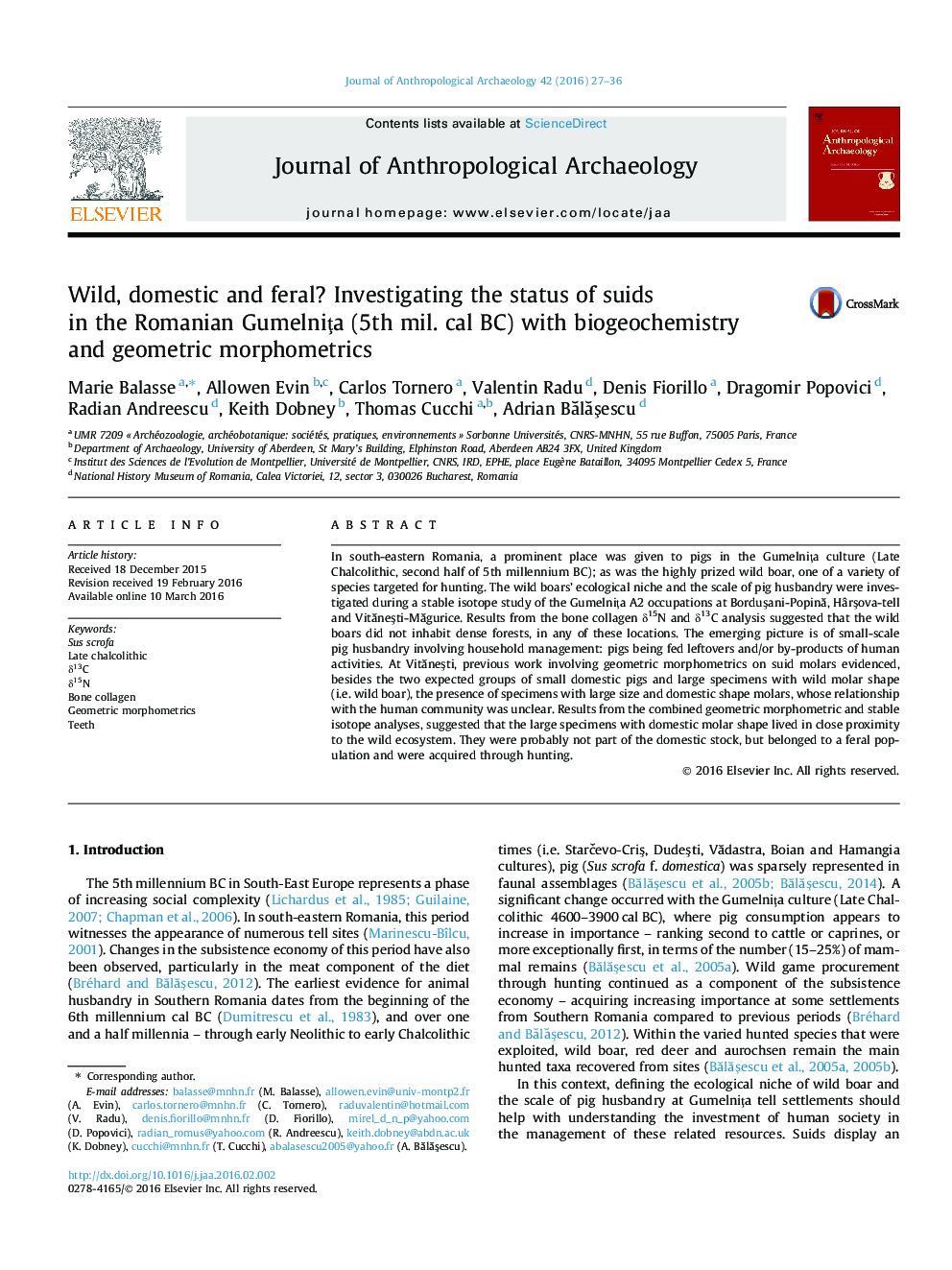| کد مقاله | کد نشریه | سال انتشار | مقاله انگلیسی | نسخه تمام متن |
|---|---|---|---|---|
| 1034857 | 1483848 | 2016 | 10 صفحه PDF | دانلود رایگان |
• Isotopic and geometric morphometric analyses reveal Gumelniţa pig husbandry practices.
• Pigs were fed from refuse of human activities, suggesting small scale husbandry.
• Large suids with domestic molar shape show close proximity to the wild ecosystem.
• The large suids with domestic molar shape were feral pigs acquired through hunting.
In south-eastern Romania, a prominent place was given to pigs in the Gumelniţa culture (Late Chalcolithic, second half of 5th millennium BC); as was the highly prized wild boar, one of a variety of species targeted for hunting. The wild boars’ ecological niche and the scale of pig husbandry were investigated during a stable isotope study of the Gumelniţa A2 occupations at Borduşani-Popină, Hârşova-tell and Vităneşti-Măgurice. Results from the bone collagen δ15N and δ13C analysis suggested that the wild boars did not inhabit dense forests, in any of these locations. The emerging picture is of small-scale pig husbandry involving household management: pigs being fed leftovers and/or by-products of human activities. At Vităneşti, previous work involving geometric morphometrics on suid molars evidenced, besides the two expected groups of small domestic pigs and large specimens with wild molar shape (i.e. wild boar), the presence of specimens with large size and domestic shape molars, whose relationship with the human community was unclear. Results from the combined geometric morphometric and stable isotope analyses, suggested that the large specimens with domestic molar shape lived in close proximity to the wild ecosystem. They were probably not part of the domestic stock, but belonged to a feral population and were acquired through hunting.
Journal: Journal of Anthropological Archaeology - Volume 42, June 2016, Pages 27–36
